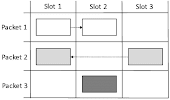#Week 2. 2 technologies in the history of the Internet that paves the way to today's reality
Unlike the ARPANET where each node could only talk directly to a node at the other end of a wire or satellite circuit, the fact that it used a shared media, generated a considerable interest and several projects were initiated thanks to the idea. Among those I can highlight the Ethernet, that is still operative. Unlike the Aloha system, in which transmitters could not receive any signals, Ethernet stations could detect that collisions had occurred, stop transmitting immediately, and retry a short time later (at random). Ethernet was at first used to connect around 100 computers in Palo Alto (EEUU) and with the help of David Clark’s group at MIT, built an efficient TCP implementation which led to the proliferation of PCs connected by LANs and increasing the size of Internet.
Ethernet is one of two LAN technologies used today, with the other being wireless LANs (WLANs). Ethernet uses wired communications, including twisted pair, fiber-optic links, and coaxial cables.
Ethernet operates in the data link layer and the physical layer. It is a family of networking technologies defined in the IEEE 802.2 and 802.3 standards.
Find here below the sources used for this entry:
- https://www.nap.edu/read/6323/chapter/9#175
- https://www.clear.rice.edu/comp551/papers/Abramson-Aloha.pdf
- https://www.researchgate.net/figure/Example-of-SIC-enabled-slotted-ALOHA-Packet-2-is-received-in-singleton-slot-3-enabling_fig3_309551186
- http://www.wirelesscommunication.nl/reference/chaptr06/aloha/aloha.htm
- Networking Academy CCNAv7 curriculum, Introduction to Networks (ITN)


Comments
Post a Comment